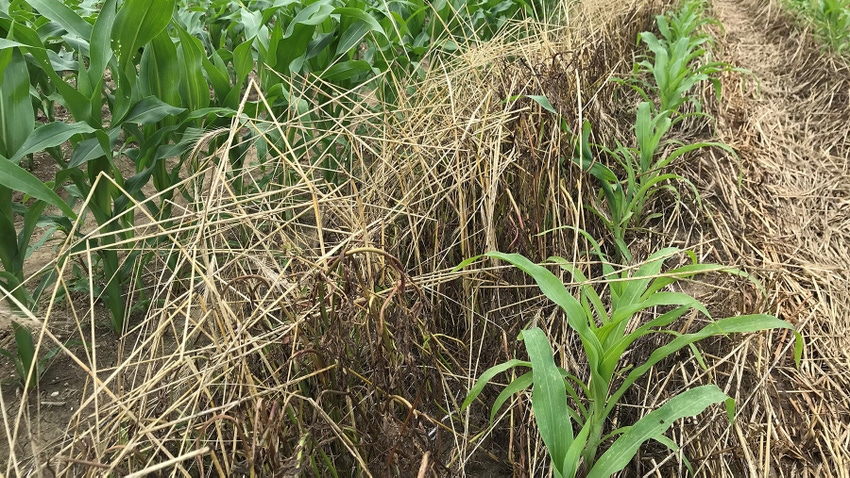September 20, 2023

Despite several recognized benefits of growing winter cover crops, this conservation system has limited acceptance, something Mississippi State University researchers are trying to change by identifying and better managing risks.
Among the significant benefits of planting a green crop on farmland otherwise exposed to winter elements are improved soil health, water quality and erosion control. But cover crops grow into the optimal spring planting times for summer crops. This complicates their use and can reduce productivity of the summer crop.
For the last several years, MSU research has addressed various aspects of this issue, primarily focusing on cover crop management and cover crop species.
The first big question MSU researchers looked at was when the cover crop should be terminated by herbicide application.
Cover crop termination
Erick Larson, MSU Extension Service grain crop agronomist, said terminating the cover crop at the correct time has a dramatic impact on corn production.
With the ideal corn planting window from late March to early April, MSU researchers tested terminating the cover crop six weeks, four weeks and two weeks before planting, as well as at planting.
“There was a lot of significant difference among the intervals,” Larson said. “As a general rule, growers seeking to gain benefits associated with growing cover crops must use herbicides to terminate cover crops about four weeks in advance of planting in order to maintain the corn productivity associated with early planting systems tailored for high-rainfall, Southern climates.”

Mississippi State University research is investigating the best mixture of plants to use in a cover crop system. This cereal rye and berseem clover mix shows typical spring growth. (Erick Larson, MSU Extension Service)
After determining correct termination timing, the next question was what to plant as a cover crop. Researchers found a mix of a legume species and a cereal crop is the most beneficial.
Both cereals and legumes serve essential roles in a cover crop mixture.
“Cereal species have a fibrous root system and produce vigorous fall growth that helps protect the soil and stabilize it during the high-rainfall winters,” Larson said. “Legumes take nitrogen from the atmosphere and fix it in the soil where it can benefit the crop grown following the cover crop.”
Larson said researchers generally found more complications associated with cereals than legumes.
“The issues were found with cereals because their extensive biomass and stems were slow to deteriorate in the spring, preventing the soil from warming as needed,” Larson said. “Legume plant residue usually deteriorates quicker after it dies with less negative impact on the summer crop.”
Fixing nitrogen
Legumes also fix nitrogen in the soil, which can help improve yields and profitability.
“Nitrogen is a huge component of the inputs and expenses of growing a corn crop, and any extra nitrogen we can add to the soil by using a legume is a huge benefit,” Larson said. “This nitrogen also helps break down cover crop residue and limits negative effects of nitrogen immobilization, which may restrict its availability for crops.”
Although their benefit is not financially quantifiable, cereal crops stabilize the soil and produce a significant amount of organic matter than can be recycled in the soil.
“Organic material is inherently low in the South because we have such a warm, moist environment,” Larson said. “Our winters don’t freeze the soil and stabilize plant residue, so cereal crops can provide a valuable source of organic matter to our cropland.”
Find the 2022 Progress Report on this topic from the Mississippi Corn Promotion Board at http://mscorn.org. The report was produced by Larson and fellow MSU experts Jason Krutz, Jason Bond, Justin McCoy, Rocky Lemus and Will Maples.
Source - Mississippi State University Extension Service
About the Author(s)
You May Also Like






